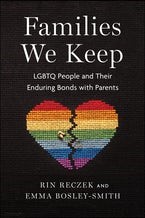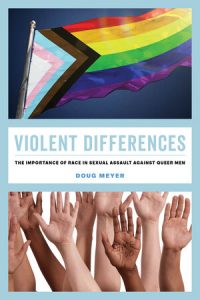“Hey Eli, can you watch the kids on Friday while I run to a doctor’s appointment?”
“Sure Maria! By the way, would you mind getting my mail next week while I visit my sister?”
While it’s easy to imagine similar conversations between neighbors occurring all around the country every day, there’s a widespread belief that these conversations have become less common, that neighbors have grown apart, and that the bonds between neighbors have weakened. Yet, in recent research, colleagues and I find that connections amongst neighbors are more stable than many may expect.
Neighborhood social cohesion, which is the extent of mutual trust and support among neighbors, is an important predictor of a wide range of outcomes, including both kids’ and adults’ well-being.1-4 Researchers have hypothesized that neighborhood social cohesion has been declining for decades due to factors like changes in communication technology, leisure activities, and economic organization.5-8 This is commonly referred to as the “community lost” hypothesis.
Yet, research on whether changes in perceived neighborhood social cohesion have actually occurred is lacking, and despite the far-reaching body of research that considers neighborhood social cohesion, gaps in the literature remain. Studies on the topic frequently use data from a single city (often those near large research universities, like Chicago or Boston), leaving a large gap in our knowledge of what is happening throughout the country.9 Furthermore, few studies examine how perceptions of neighborhood social cohesion vary by individual and neighborhood characteristics, and those that do have produced conflicting findings. For example, some studies suggest that less-resourced neighborhoods may be more cohesive, while others suggest that higher-resourced neighborhoods are more cohesive.10-11
In a recent research article, my colleagues and I addressed these gaps in the research by focusing on trends in neighborhood social cohesion across the entire country and whether perceptions of neighborhood social cohesion differ by individual and neighborhood characteristics. We used two different sets of data in our study, data which focuses on families with children, as neighborhood social cohesion is particularly important for families with children. Households with children are also the most common type of household in the US.
The first set of data is the Survey of Income and Program Participation (SIPP), which allowed us to look at nationwide trends from 1997 to 2011 in neighborhood social cohesion. The second set of data is the Fragile Families and Child Wellbeing Study (FFCWS), which began following a group of families in the early 2000s though 2017, allowing us to examine whether individuals’ perceptions of neighborhood social cohesion have changed and whether neighborhood characteristics are associated with differences in neighborhood social cohesion. In both data sets, respondents shared how much they agreed with statements related to neighborhood social cohesion, such as “There are people I can count on in this neighborhood” and “This is a close-knit neighborhood.” We examined responses to individual statements and also combined the statements and their responses into a single scale representing overall cohesion.
Findings:
- Both data sets:
- Across the different outcome measures, neighborhood social cohesion either remained stable or increased over time.
- SIPP data:
- Reported cohesion was greater for respondents who are: homeowners, married, non-Hispanic white, college-educated, middle-aged, higher-income, or living in nonmetro areas.
- FFCWS data:
- Cohesion was greater for respondents who are: homeowners, higher income, college-educated, and not living in public housing.
- Cohesion was greater for non-Hispanic Blacks compared to non-Hispanic Whites for some measures. Cohesion was lower for other non-Hispanic races and identities compared to non-Hispanic Whites for most measures.
- Cohesion was lower for respondents in neighborhoods with higher percentages of: unemployed residents, housing units that are rented, and households receiving public assistance.
In sum, we used different data sources with different strengths, and found multiple consistent patterns that all point to overall stability in neighborhood social cohesion across time and across individual and neighborhood differences. We found that neighborhood social cohesion has not decreased, and in fact has increased in certain ways. Our findings contradict the popular “community lost” hypothesis, at least for families with children. However, we did find notable disparities in neighborhood social cohesion depending on individual and neighborhood characteristics. We found lower levels of neighborhood social cohesion for respondents who had incomes below the poverty line, lived in disadvantaged neighborhoods, or were racial and ethnic minorities, renters, or unmarried. Since higher neighborhood social cohesion is associated with greater well-being for both adults and children, our findings suggest that less-resourced and/or marginalized families may face a well-being disadvantage linked to lower neighborhood social cohesion. While we do not find evidence that neighborhood social cohesion has decreased in recent years, concerns about certain families experiencing lost community are not unfounded.
References:
- Dawson, Christyl T., Wensong Wu, Kristopher P. Fennie, Gladys Ibañez, Miguel Á. Cano, Jeremy W. Pettit, and Mary Jo Trepka. 2019. “Perceived Neighborhood Social Cohesion Moderates the Relationship between Neighborhood Structural Disadvantage and Adolescent Depressive Symptoms.” Health & Place 56:88–98.
- Robinette, Jennifer W., Susan T. Charles, Jacqueline A. Mogle, and David M. Almeida. 2013. “Neighborhood Cohesion and Daily Well-Being: Results from a Diary Study.” Social Science & Medicine 96:174–82.
- Robinette, Jennifer W., Jason D. Boardman, and Eileen Crimmins. 2018. “Perceived Neighborhood Social Cohesion and Cardiometabolic Risk: A Gene × Environment Study.” Biodemography and Social Biology 65(1):1–15.
- Sharifian, Neika, Briana N. Spivey, Afsara B. Zaheed, and Laura B. Zahodne. 2020. “Psychological Distress Links Perceived Neighborhood Characteristics to Longitudinal Trajectories of Cognitive Health in Older Adulthood.” Social Science & Medicine 258:113125. doi:10.1016/j.socscimed.2020.113125.
- Boessen, Adam, John R. Hipp, Emily J. Smith, Carter T. Butts, Nicholas N. Nagle, and Zack Almquist. 2014. “Networks, Space, and Residents’ Perception of Cohesion.” American Journal of Community Psychology 53:447–61.
- Dotson, Taylor. 2017. Technically Together: Reconsidering Community in a Networked World. Cambridge, MA: MIT Press.
- Wellman, Barry. 1979. “The Community Question: The Intimate Networks of East Yorkers.” American Journal of Sociology 84(5):1201–31.
- Wellman, Barry, and Barry Leighton. 1979. “Networks, Neighborhoods, and Communities: Approaches to the Study of the Community Question.” Urban Affairs Quarterly 14(3):363–90.
- Schmidt, Nicole M., Eric J. Tchetgen Amy Ehntholt, Joanna Almeida, Quynh C. Nguyen, Beth E. Molnar, Deborah Azrael, and Theresa L. Osypuk. 2014. “Does Neighborhood Collective Efficacy for Families Change over Time? The Boston Neighborhood Survey.” Journal of Community Psychology 42(1):61–79.
- Keene, Danya, Michael Bader, and Jennifer Ailshire. 2013. “Length of Residence and Social Integration: The Contingent Effects of Neighborhood Poverty.” Health & Place 21:171–78.
- Sampson, Robert J., Jeffrey D. Morenoff, and Felton Earls. 1999. “Beyond Social Capital: Spatial Dynamics of Collective Efficacy for Children.” American Sociological Review 64(5):633–60
Kira England is a PhD candidate studying Sociology & Demography at the Pennsylvania State University. You can follow them on Twitter @kira_england
Acknowledgement:
We acknowledge assistance provided by the Population Research Institute at Penn State University, which is supported by an infrastructure grant by the Eunice Kennedy Shriver National Institute of Child Health and Human Development (P2CHD041025).











